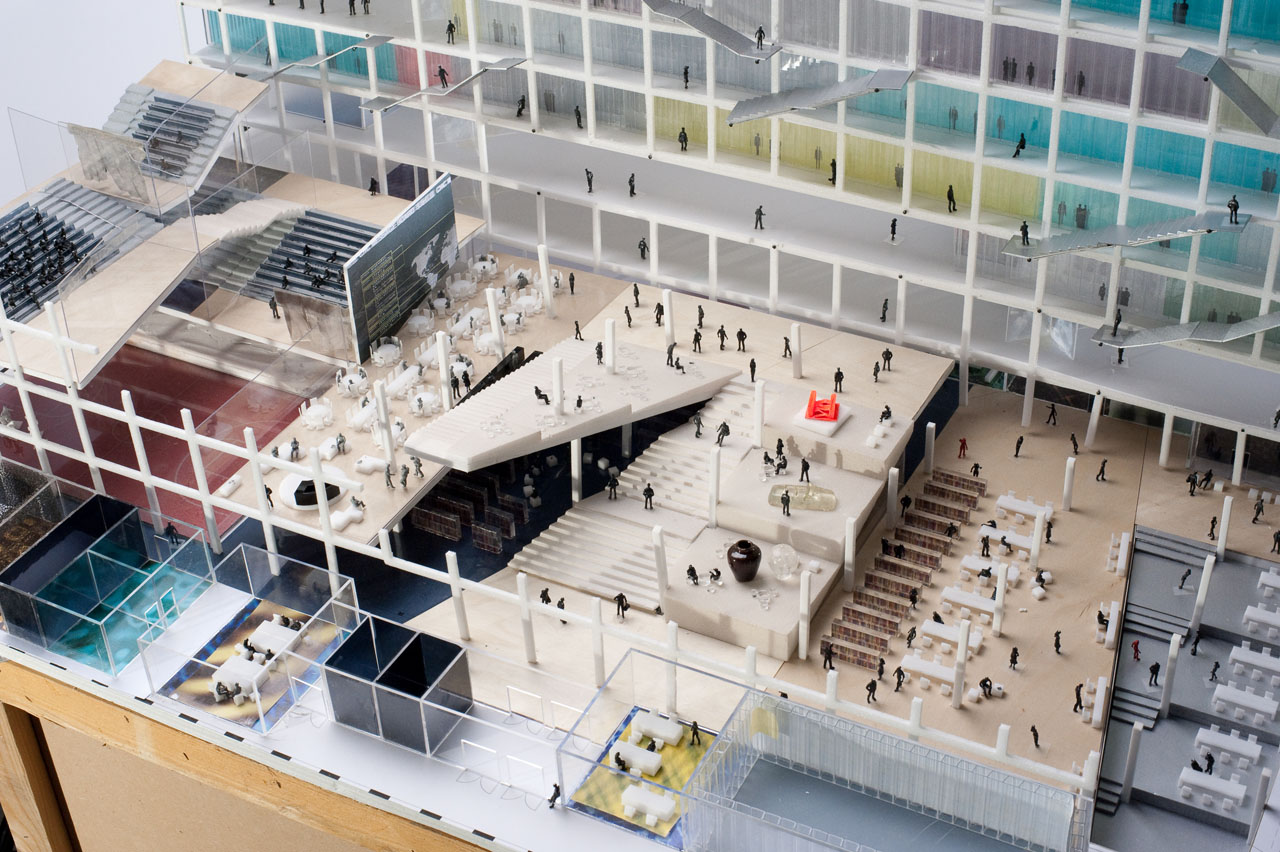A Design Juxtaposition by the Office for Metropolitan Architecture: The New Chu Hai College
Light. Organic. Structured. Natural. Airy. Geometric. Breathtaking. These are just a few words that could be used to describe the juxtaposition of design elements that the Office for Metropolitan Architecture (OMA) chose to incorporate as inspiration for the new structure erected alongside Castle Peak Bay in Hong Kong’s New Territories. The structure is the new Chu Hai College of Higher Education campus, and beginning in 2013 students will begin populating the lavish facility surrounded by rolling hills and tranquil views of the bay.

The project, awarded to the Office for Metropolitan Architecture (OMA) in January 2010, is a two-building, 300,000-sq. ft. campus, designed to facilitate interactions between students from differing disciplines and departments through the creation of large communal spaces. The design incorporates aspects of functionality, sustainability, and, of course, aesthetics. OMA worked in collaboration with Leigh & Orange Architects to complete the project.
The Vision Behind the Concept
The vision behind the concept of the Chu Hai College design was to merge two key elements – the natural beauty provided by the surrounding scenery and Chu Hai’s multidisciplinary education – into one aesthetically pleasing yet functional space. Additionally, the design team was working under stringent time constraints, a mere two years from start to finish, which also had to be taken into consideration. Of this vision was born the concept, featuring pure geometric forms and natural, organic shapes.



At the focal point of the design are two parallel horizontal slabs, each soaring to eight stories high. The horizontal slabs, which are connected by a “mat” of stairs and platforms, could be quickly constructed. The stairs zigzag between the slabs and the surrounding buildings in a manner that highlights both the mats – the hub of the campus, encompassing 75% of the space – and views of the captivating landscape. Aerated structural facades provide glimpses of the inner workings of the buildings and Castle Peak Bay and the surrounding hills, as well as other parts of the campus, in an effort to increase a sense of oneness at Chu Hai College. For instance, while in class, an art student could glance across campus into a math class, which provides a sense of visual unity for the many disciplines that make up the college.
Aesthetics Meets Functionality
In addition to offering 4,000 students and faculty members entrancing views, the campus consists of three education facilities with 10 departments each, and two research centers. The campus includes a cafeteria, gym, four lecture halls, and a library at the very center of the campus. Flexible space is also included in the design, which can be used for classrooms, studios, or offices.
The Chu Hai College design is also efficient and sustainable. The slabs are specifically oriented to maximize natural ventilation, which can reduce the need for air conditioning by 15%–30%. The steps, platforms, and ramps provide large shaded areas as well as a circulation system between education and social facilities. One ramp, in particular, coincides with the slope of the hill on which it was built, which provides the structure with a sturdy foundation.
The design, led by General Manager of OMA Asia David Gianotten, associate Chris van Duijn and OMA partner Rem Koolhaas, beat seven submissions from world-renowned architecture offices. Chu Hai College's selection committee chose OMA’s “bookstand” design because of the strong visual identity it would provide for the college, flexible spaces, and the creation of an environment conducive to facilitate interaction among students and faculty from various backgrounds.


J. Mariah Brown
J. Mariah Brown is a technical research writer and the owner of Writings by Design, a comprehensive business writing service company that specializes in business development, promotion, and client outreach. She has worked in a variety of technical and non-technical industries including, but not limited to, Government, Non-Profit, Engineering, Translation and Interpretation, Christian and Women’s Publications, and Fashion and Beauty. She is a graduate of the prestigious E.W. Scripps School of Journalism at Ohio University and is currently pursuing a master's degree from Gonzaga University in Communication and Organizational Leadership.






